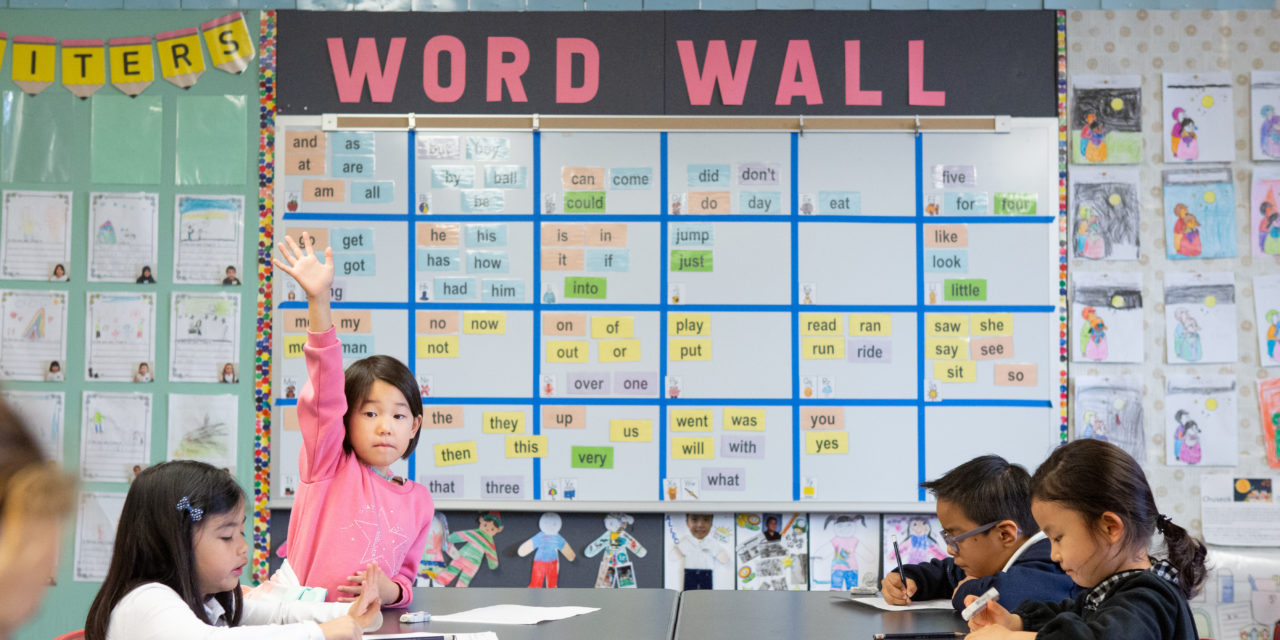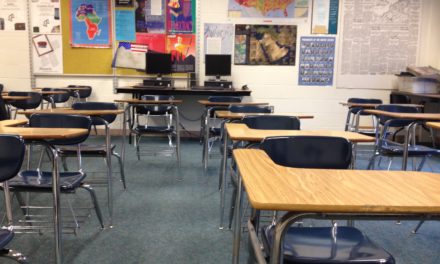The Oakland, California, school district touts itself as the nation’s first full-service community schools district, committing to a model of school improvement that, according to the model’s most prominent proponents, provides students with “well-rounded educational opportunities” and the “supports” they need to be successful. Community schools attend to the basic needs of the communities they serve, which often entails, according to newsreports, such things as access to health and dental care, nutritious food, arts programs, sports and recreation, or after-school activities. But in February 2022, Oakland, despite its commitment to its districtwide reform plan, announced it is shutting down several of its community schools.
As Mother Jones reported, Oakland school board members voted to close seven schools in the district, three of which—Brookfield Elementary, Carl B. Munck Elementary, and Korematsu Discovery Academy—are official practitioners of the community schools model, according to the National Education Association, which promotes this model and helps schools to implement it. A fourth school, Oakland Community Day School, which is scheduled to be closed at the end of the current academic year, uses an approach very similar to the full-service support offered at most community schools.
The Oakland board’s decision to shut down and merge schools has sparked widespread opposition in the community, including criticism from the teachers’ union and community groups, organized rallies, a protest caravan to board members’ homes, student walkouts, and a hunger strike staged by two Oakland school staff members, which was eventually called off. “On the day of the vote, more than 2,000 viewers logged in to the virtual board meeting and hundreds raised their hands to speak during public comment,” World Socialist Web Site reported. “[A]ll speakers unanimously opposed the school closures.”
Much of the criticism focuses on the fact that the closures disproportionately affect families who are often the most in need of the full-service nature of the community schools approach, principally, families of color with children who often struggle the most in schools. As KQED reported, when the board proposed its initial plan to shutter eight schools in January, “an estimated 93 percent of students, on average, [at the schools affected by the closure plan were] considered either lower-income, English learners, or foster youth—compared to the district-wide average of about 80 percent.” Black students made up about 43 percent of the students affected by this decision and accounted for “almost twice the proportion of Black students in the entire district.”
Board members and the district’s administration maintain that the closures are necessary because of enrollment declines and the district’s longtime financial problems. “Enrollment in Oakland Unified has declined by more than 15,000 over the past 20 years,” the New York Times reported, and, “the district is facing a $12.3 million deficit on top of $3.2 billion in needed repairs at school facilities.”
However, even proponents of the closures, including the editorial board of the East Bay Times, admit, “[C]losing small schools alone will not cover the district’s structural budget shortfall.”
Also, it would seem that closing schools would be more apt to increase student and family attrition—as ousted parents would opt for other providers or leave the district altogether—rather than stemming the bleeding.
The district has also claimed that closing the community schools is necessary for the school district to fulfill its mission of being a “quality community schools” district.
According to a 2019 article in EdSource, Oakland Superintendent Kyla Johnson-Trammell has argued that “[t]he only way to improve school outcomes is [to] get enough children in every school so each campus is fiscally sustainable and then to ensure they get the full range of services they need, including support services like counselors, librarians, and so on.”
When the district first proposed closing schools, its presentation to the board repeated the commitment to “build a Full Service Community District focused on high academic achievement while serving the whole child,” but then it proceeded to make the case that the high number of small schools in the district, including those that practice the community schools approach, put that mission “in jeopardy.”
The district’s insistence that it must close community schools in order to save them seems reminiscent of other examples of government doublespeak in the past, and multiple sources Our Schools has spoken with question the district’s commitment to the community schools model, or at least question the level of commitment by the district to the core tenets of the model.
Complicating the matter is Oakland’s history of welcoming charter schools into the district. According to a 2019 analysis by KQED, “in the decade after 2000,” the number of charter schools “more than tripled.” And the charter enrollment in Oakland has remained high, as a 2022 EdSource report noted, growing a total of “around 16 times from 1,011 students in 2000-01 to 16,678 in 2020-21.” The district seemed to be guided by an approach to school improvement that relied on the principles of market competition to attract more students and funding, a reform methodology that seems antithetical to the community schools model that relies on collaboration.
Oakland has had and continues to have relatively high charter school enrollment numbers compared to the rest of California, as EdSource reported in an analysis of 2020-2021 district and state data: “about 32 percent of Oakland students attended charters, while only about 12 percent of students across the state attended charters.” Meanwhile, “between the 2000-01 and 2020-21 school years,” the enrollment in Oakland’s public “district-run schools dropped 34 percent from 53,852 to 35,489, according to the district’s data.” As the per-pupil funding for these students follows them to the charter schools, the district is left with less funding to support the rollout of a successful community schools model.
Often, Oakland public schools, which have been closed or threatened with closure due to low enrollment, have had their classroom spaces leased to charter schools, which is required by California state law but is hotly contested in the community.
The spotlight on Oakland comes at a time when there is growing popularity of the community schools movement. California recently launched a $3 billion project to expand the number of community schools around the state. Maryland is planning to convert nearly one-third of the state’s public schools to the community schools model by 2027. And Congress has proposed to more than double—from $30 million to $75 million—the federal government’s grant program for full-service community schools.
‘A big hole in this community’
When former Oakland Superintendent Tony Smith declared the district’s adoption of the community schools model in 2010, the announcement “vaulted the struggling district into the national spotlight,” according to a 2013 article in EdSource. EdSource reporter Michelle Maitre wrote that the decision to adopt the model “would vastly expand the role of schools in the lives of their students and the community as a whole,” and that, even though Smith was leaving Oakland, “[his] departure is unlikely to halt the reform initiative.”
Brookfield Elementary is an Oakland school where the reform initiative took hold but now looks to have been killed as the school is forced to close.
“Closing this school would leave a big hole in this community,” fifth grade teacher Corrin Haskell told Our Schools. Haskell has been teaching at Brookfield for so long—25 years—that many of the students he currently instructs are children of parents whom Haskell taught years ago.
According to Haskell, Brookfield serves a high percentage of students who are unhoused, students who don’t speak or read the English language very well, and students who have been labeled as having “discipline problems.” The school also has a “high population of students needing special education services,” according to Haskell, as well as a long list of students with special needs who are mainstreamed into the general education classrooms.
Haskell said the neighborhood surrounding Brookfield has a “bad reputation,” but the school has become the anchor of the community. It is located near other nonprofit organizations the school partners with, including a library, a senior living center, and a recreation center. The school also partners with businesses near the school.
Brookfield has recently gone to great lengths to make improvements to its facilities, including planting an orchard and a bamboo forest, creating new soccer fields, and adding a new lab for teaching science, technology, engineering, art, and math (STEAM), which was funded with a $100,000 grant from the NBA Cares program.
Brookfield has specialized staff and partnerships that make it possible to provide mental and physical health services to students and legal services to families. Haskell isn’t sure where students and families would go to get these services when the school closes.
Schools that families would have to transfer to are more than a mile away, he said, and the neighborhood, which sits in the middle of a triangle formed by three major thoroughfares, is not walkable. “Everything in the community is attached to the school,” he said.
Also, counter to the district official’s claims of targeting closures of “small schools” only, Brookfield was never designed to be a small school, according to Haskell, who said the current enrollment of 200 is far below the high-water mark of 800 that he remembers from years ago.
A small school by design
Carl B. Munck Elementary, another school destined for closure, resembles the flip side of a community schools implementation.
Unlike Brookfield, Munck was designed to be a small school, according to the school’s Principal Denise Burroughs, who spoke with Our Schools.
Also, instead of being nestled into a neighborhood like Brookfield is, Munck is “somewhat of an outlier on the closure list,” said Burroughs, because it is located in the Northeast Hills, and is wedged between a large park and a tennis club, making it “not a walkable school.”
Because of its out-of-the-way location, Munck is more of a “commuter school,” said Burroughs, attracting parents from outlying areas who work in Oakland but don’t live there. Parents are drawn to the school, Burroughs explained, because of its small size and its focus on the arts and technology. That curricular focus came about “not by the design of someone else,” said Burroughs, but “because that is what has evolved, given the capabilities of the staff and the interests of students and families.”
Also, unlike Brookfield, Munck’s implementation of the community schools model has placed far less emphasis on features like physical and mental health services, often called wraparound services.
“Not offering certain services doesn’t preclude you from being a community school,” said Burroughs, who has worked in the district for 28 years, 17 as a principal. “Each school is different and needs to set up a [community schools] model that meets the needs of its families,” she said. “For us, that means we may not offer the types of wraparound services that are often associated with community schools.”
“We are a small school,” Munck Program Director René Mastin told Our Schools. “The school was constructed to be a small school, so when you try to expand us beyond what was originally the creative model for this space, then you create problems. [Because] we are small, part of our community schools model is to be able to know all the kids who come through the door and recognize their families and know something about [them],” said Mastin, who has worked for the district for 20 years, 18 at Munck.
That determination to offer services that families genuinely need, rather than imitating what other schools offer, led the school to extend its operating hours—the school is open from 6 a.m. to 6 p.m.—to accommodate the needs of its commuting parents.
The after-school program is particularly popular, according to Burroughs. Two parents Our Schools communicated with affirmed that popularity.
“The teachers in the after-school program are just amazing,” Courtney Easley, a parent of a first grader at Munck, wrote in an email to Our Schools.
“My son loves the programs the school has to offer and has a schedule he has been following for three years,” wrote Dai Shane Wilder, a parent of a second grader at Munck, adding, “It will be extremely difficult to find another school” when Munck closes.
‘More of an ideal than an actuality’
“Community schools [in Oakland] are still more of an ideal than an actuality,” Janelle Scott told Our Schools. “Consolidating and closing schools seems to challenge that ideal.”
Scott, a University of California at Berkeley professor and researcher who closely studies the impact of school closures and the spread of school privatization, has been a prominent critic of the district’s closure plan, writing in an op-ed for the Mercury News that the savings projections the district claimed will result from the closures “do not account for the costs to students’ health, well-being, and safety, or offer clear plans for transportation and before- and after-school care, which are essential for working families.”
In her phone conversation with Our Schools, Scott said that since the beginning of Oakland’s commitment to the community schools model, starting with former Superintendent Smith, “it’s not as clear that subsequent leaders have shared that commitment.”
“Willingness to invest in the community schools ideal has been a challenge,” she said, and her observation is that the implementation is far from being systemic. The district, she said, “has not been able to exert an overall framework” for implementing the model.
While Scott questioned Oakland’s commitment to implementing the community schools model, front-line Oakland educators say the district’s implementation is not being true to the actual principles of the model.
In its “rushed” decision to close schools, Brookfield teacher Haskell said, “[The district is] not engaging the community at all… The top-down decision-making reeks of elitism.”
According to Haskell, teachers and school staff at Brookfield used the collaborative leadership practices supported by the community schools model to stretch their autonomy, so they could respond to student and family needs more quickly without needing to ask for district permission. “Now, all that work seems to be thrown away,” he said.
Haskell also sees the district’s stance of welcoming charter schools as a betrayal of its commitment to the community schools model. According to Haskell, Brookfield enrolls students “charter schools won’t take,” echoing frequent complaints that charter schools cherry-pick students who are more likely to do well in school, leaving public schools with denser populations of the most challenging students.
Haskell explained that as Brookfield students migrated to charter schools in the surrounding neighborhood, Brookfield had to shed costs by closing its computer lab and library and cutting back on its extensive sports offerings, which further incentivized families to leave the school.
Munck educators Mastin and Burroughs also accused the district of not being genuinely supportive of the collaborative approach of the community schools model that allows for community-led creation of school programs and practices from the bottom up. In Munck’s case, the district has pressured the school to provide services the district is supportive of rather than allowing Munck to determine for itself what is best for its students and families.
“Community schools is a model that oftentimes [school leaders] want to just… [impose] on any school,” said Mastin.
Principal Burroughs accused the district of “trying to have us be something else” by emphasizing wraparound services in its adoption of the model, while, at Munck, adopting the approach has led to more of “an academic model and a social-emotional model.”
Berkeley professor Scott pointed out that Oakland’s plan for closing schools also poses significant problems in schools that will be assigned to welcome students from the schools that have been closed. The welcoming schools, many of which do not follow the community schools model, may not even be aware that they’ve been designated for that role and won’t know which students will show up at their doors until opening week.
For that reason and others, the district’s plan, Scott felt, “shows a lack of consideration of all the dimensions that are important if students are really, as the district claims, at the center of its efforts.”
Regardless of whether or not Oakland truly is at a juncture where it has no choice but to close schools, the decision to close schools that follow the community schools approach shines a light on the policy implications of becoming a school system that says it is committed to an approach to school transformation that holds high the well-being of students and families and the needs and desires of the community.
The community uproar over the closure decision reveals that when Oakland school officials chose to hitch their education reform cart to the horse of community schools, they may not have foreseen that adhering to the principles of the model would make it more difficult for the district to maintain a command-and-control leadership practice that runs counter to the model.
If what constitutes a “quality school” is based on how well the school responds to the needs of the surrounding community, then how can fiscal efficiency vault to the top of policy imperatives?
If districts claim to include communities in making decisions about schools, how can they make sweeping decisions based on a perceived budget imperative the community doesn’t accept?
If a school district commits to a collaborative model for school transformation, how can that plan coexist in the context of market competition from charters?
Oakland seems uniquely at the forefront of these difficult policy questions. Are districts that are adopting the community schools model elsewhere in California, in Maryland, and around the country paying attention?
(Photo by Allison Shelley/The Verbatim Agency for EDUimages, CC BY-NC 4.0.)






Recent Comments